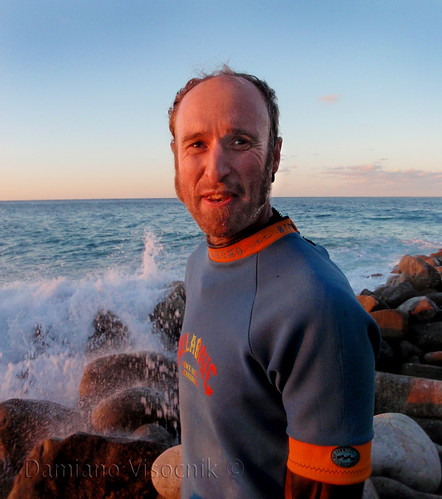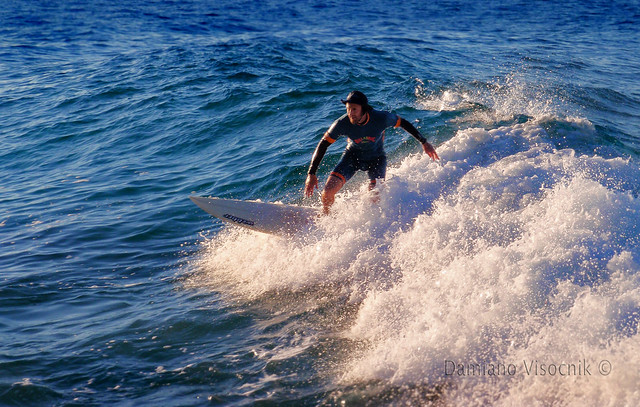While Australian Maritime laws require that I should carry an EPIRB while paddling offshore (more than two nautical miles from shore in non sheltered waters) I find that for sea kayaking a PLB is possibly a safer unit to have in case of emergency.
I believe that a beacon should be carried on the person and be readily accessible in case of emergency instead of being stored below deck when kayaking.
Current EPIRBs are too bulky to be carried on my PFD.
I have my PLB attached to the back of my life jacket and is exposed to the marine environment, often submerged while rolling or swimming.
While the manufacturer does assure that my PLB (model GME MT 410G) is a waterproof and submersible unit there are several documented cases (that I am aware) of malfunction of the unit by water intrusion.
On a trip to the Whitsunday Islands our group had one GME unit activate by itself without any prompting by the user.
The PLB started to beep suddenly giving the same signal as transmitting an emergency call.
We were able to paddle to shore and had the presence of mind to quickly deactivate the unit by disconnecting the battery.
Here are the steps that we performed to disable the PLB:
To do so, the top cap had to be unscrewed and removed.
To do so, the top cap had to be unscrewed and removed.
unscrewing cap
removing cap

After removal of the cap the plug that connects the battery was separated from the electronics.
removing battery connectorwater droplets on battery
salt water present inside the PLB
At close inspection and careful analysis I noticed the small "O" ring under the central screw was deformed.
GME designed the unit to have the "O" ring under the screw under compression but did not create a suitable receptacle for the "O" ring to be housed and prevent lateral expansion.
So, after a while the "O" ring slips away from the screw's head and allows leakage. The faulty unit was returned to GME and repaired under warranty.
I was assured that it was an isolated case but after the recent reports of other GME units malfunctioning I have my doubts.
GME has not recalled the units nor updated the design.
I have therefore decided to address the problem myself and modified the unit to possibly prevent the same problem occur again.
The central screw on the cap is recessed deeply into the shape of the cap.
I simply cleaned the area and applied a liberal amount of polyurethane sealant (not silicone) to the cavity and worked it really well to ensure good adhesion of the sealant.
In a few years time when the battery of the PLB unit will need replacing there might be a bit of a problem reaching that screw but in the meantime I hope that at least my unit will possibly not malfunction there.














